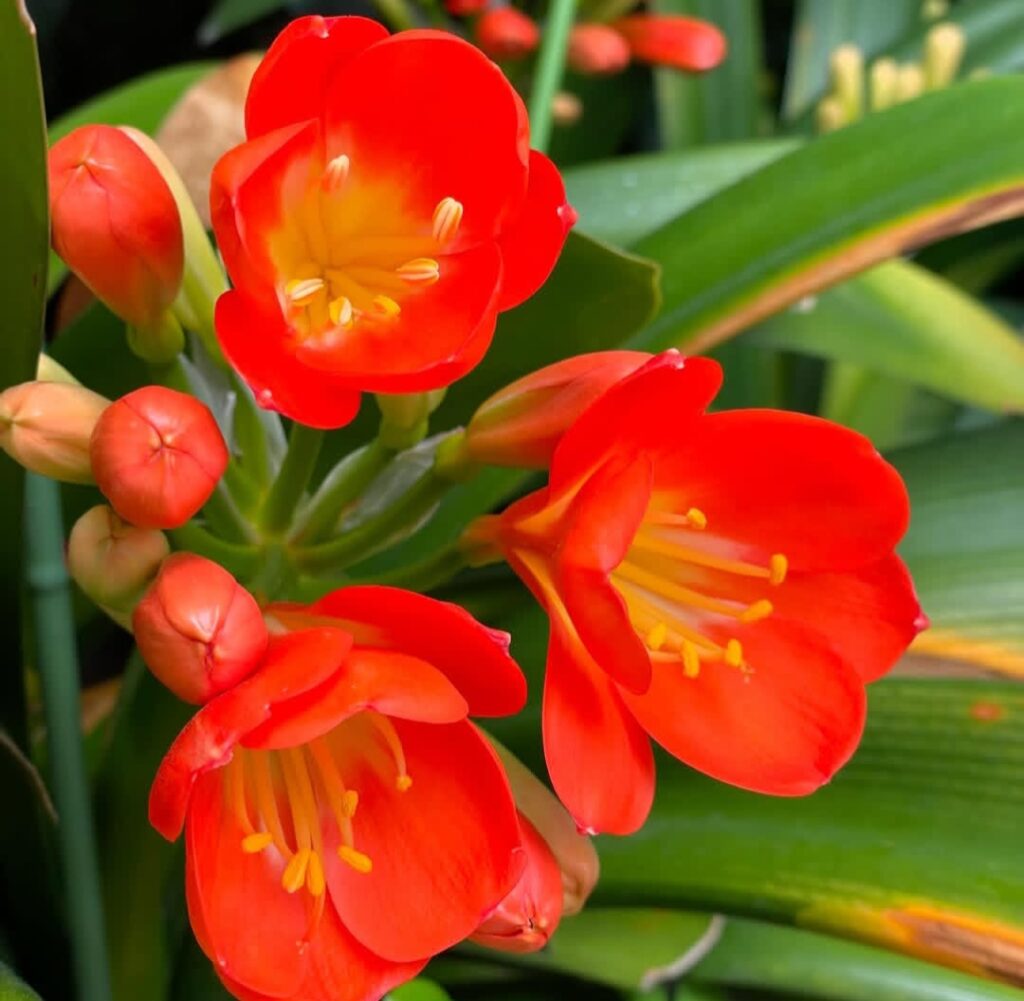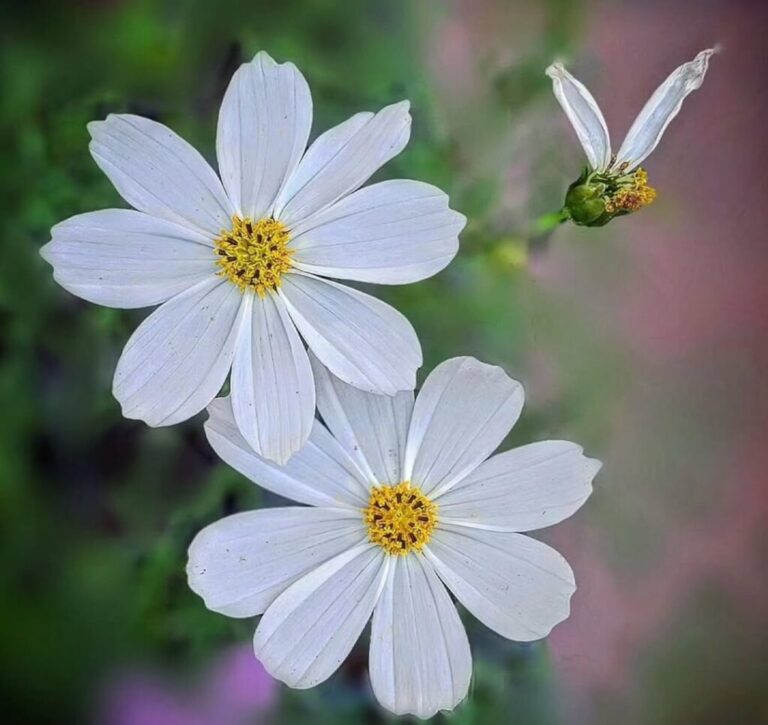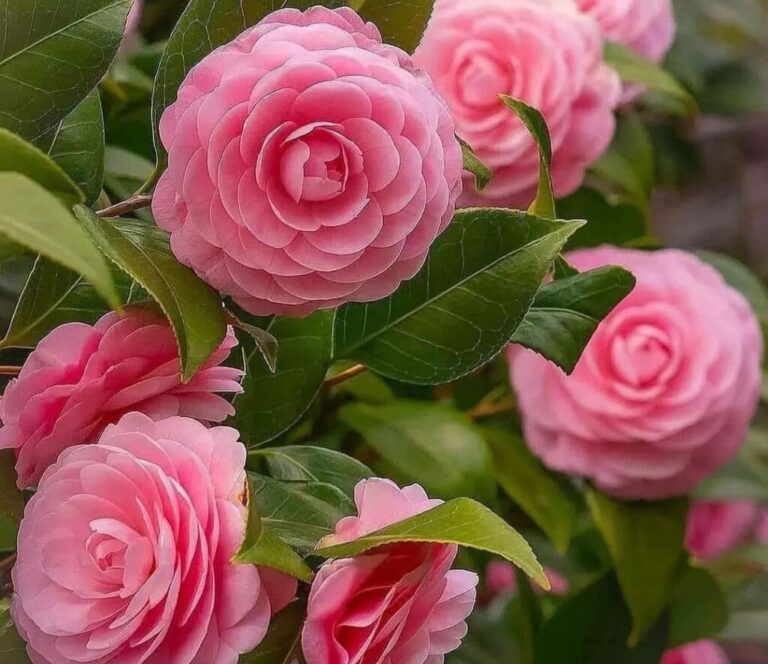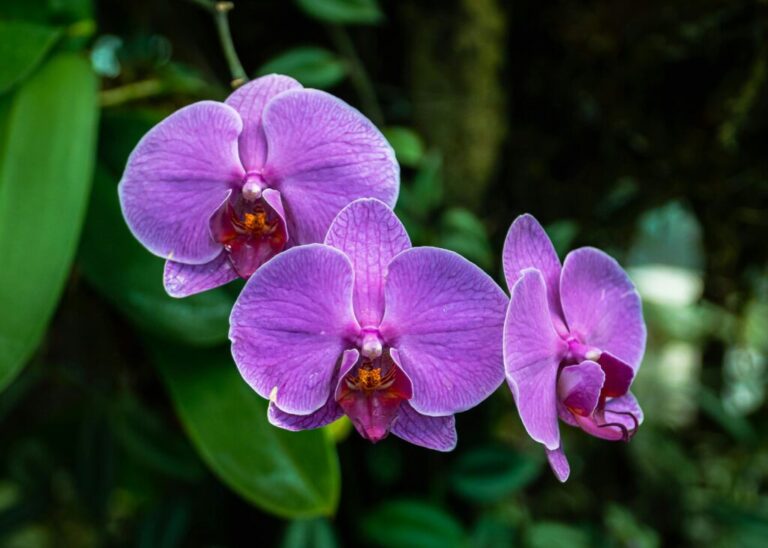The Bush Lily (Clivia miniata) is a stunning and easy-to-care-for plant that brightens up any indoor space with its lush green leaves and vibrant orange or yellow blooms. Native to South Africa, this plant is well-known for its resilience and ability to thrive with minimal maintenance. Unlike many flowering plants, the Bush Lily does not require constant attention, making it perfect for beginners. Whether you’re new to gardening or simply want a low-maintenance plant, following these 10 expert tips will help your Bush Lily grow strong, bloom beautifully, and stay healthy for years.

Bush Lily Profile
| Feature | Details |
|---|---|
| Scientific Name | Clivia miniata |
| Common Name | Bush Lily, Kaffir Lily |
| Plant Type | Evergreen perennial |
| Light Needs | Bright, indirect light |
| Watering | Moderate; allow soil to dry |
| Soil Type | Well-draining, loamy soil |
| Temperature | 60–80°F (15–27°C) |
| Humidity | Moderate |
| Fertilizer | Balanced liquid fertilizer (monthly) |
| Flower Color | Orange, yellow, red, or peach |
| Bloom Season | Late winter to early spring |
| Growth Rate | Slow to moderate |
| Mature Size | 18–24 inches (45–60 cm) tall |
| Toxicity | Toxic to pets if ingested |
- 1 1. Provide Bright, Indirect Light
- 2 2. Use Well-Draining Soil
- 3 3. Water Moderately and Avoid Overwatering
- 4 4. Maintain the Ideal Temperature
- 5 5. Provide Adequate Humidity
- 6 6. Fertilize for Healthy Blooms
- 7 7. Repot Only When Necessary
- 8 8. Encourage Blooming with a Cool Rest Period
- 9 9. Prune to Maintain Shape
- 10 10. Watch for Pests and Diseases
- 11 FAQs on Bush Lily Care
1. Provide Bright, Indirect Light
Bush Lilies thrive best in bright, indirect sunlight, making them ideal for indoor settings.Direct sun can scorch the leaves, causing them to turn yellow or brown. If your plant receives too little light, its growth may slow, and blooming may be delayed. The best spot for a Bush Lily is near an east or north-facing window, where it gets soft, filtered light. If placing it in a south-facing window, use sheer curtains to prevent harsh sun damage.
Quick Tip:
To encourage even growth, rotate your Bush Lily every few weeks so all sides receive an equal amount of light.
2. Use Well-Draining Soil
Good soil is essential for healthy root development. Bush Lilies do best in a well-draining potting mix that holds moisture but does not become soggy. A mix containing peat moss, perlite, and compost works well, as it allows for proper aeration. Heavy or compacted soil can lead to waterlogging, which increases the risk of root rot. If needed, you can use a cactus or orchid mix combined with organic compost to create the perfect growing medium.
Quick Tip:
Avoid using garden soil, as it may become compacted in a pot and block water drainage, leading to unhealthy roots.
3. Water Moderately and Avoid Overwatering
Bush Lilies prefer soil that is slightly dry rather than too wet, so overwatering should be avoided. When the top 1-2 inches of soil feel dry, water your plant. If the soil remains too wet, the roots can become suffocated, leading to fungal diseases and rot. During winter, Bush Lilies enter a dormant period and require less frequent watering. Always check the soil moisture level before watering, rather than following a strict schedule.
Quick Tip:
Use a watering can with a narrow spout to control the amount of water and prevent excess moisture around the plant’s base.
4. Maintain the Ideal Temperature
Bush Lilies thrive in temperatures between 60–80°F (15–27°C), making them perfect for indoor environments. While they can tolerate slightly cooler conditions, exposure to temperatures below 50°F (10°C) can slow their growth and affect flowering. Keep your plant away from drafty windows, heating vents, or air conditioners, as sudden temperature fluctuations can stress the plant. During the cold months, ensure your Bush Lily is placed in a stable, warm environment to keep it healthy.
Quick Tip:
If you notice the leaves turning brown at the edges, it may be a sign that the plant is experiencing temperature stress or dry air.
5. Provide Adequate Humidity
While Bush Lilies adapt well to normal indoor humidity, they do best in a moderate-humidity environment. If the air is too dry, especially during winter, the plant’s leaves may begin to curl or develop brown tips. To increase humidity, you can place a tray filled with water and pebbles near the plant, allowing moisture to naturally evaporate. Grouping plants together can also help maintain a more humid microclimate around your Bush Lily.
Quick Tip:
Wiping the leaves occasionally with a damp cloth not only increases moisture but also removes dust buildup, improving the plant’s ability to absorb light.
6. Fertilize for Healthy Blooms
Regular fertilization encourages strong growth and beautiful blooms. Use a balanced liquid fertilizer once a month during spring and summer, when the plant is actively growing. Avoid excessive fertilizing, as too much nitrogen can promote leaf growth over flowers. During fall and winter, you can reduce or stop fertilizing, as the plant enters its rest period. If your Bush Lily is not blooming, using a fertilizer with higher phosphorus content can stimulate flower production.
Quick Tip:
Dilute the fertilizer to half strength before applying, to prevent overfeeding and salt buildup in the soil.
7. Repot Only When Necessary
Bush Lilies actually prefer being slightly root-bound, so they do not need frequent repotting. Repotting is only necessary every 3–4 years, or when the plant becomes overcrowded. If the roots are pushing out of the drainage holes, it’s a sign that your Bush Lily needs a bigger pot. When repotting, choose a container that is only one size larger than the current one to prevent excess soil moisture retention, which can lead to root rot.
Quick Tip:
Refresh the soil mix when repotting to replenish lost nutrients and encourage healthy root growth.
8. Encourage Blooming with a Cool Rest Period
Bush Lilies bloom best when given a cool dormancy period in late fall or early winter. Reduce watering and place the plant in a cooler location (50–55°F or 10–13°C) for about 8–10 weeks. This signals the plant to conserve energy and prepare for flowering. Once the rest period is over, gradually increase watering and resume normal care to encourage bloom development.
Quick Tip:
If your Bush Lily refuses to bloom, try keeping it in cooler temperatures for a few weeks while reducing watering.
9. Prune to Maintain Shape
Pruning is essential to keep your Bush Lily healthy and attractive. Remove any dead, yellowing, or damaged leaves to promote new growth and prevent disease spread. Cut back flower stalks after the blooms fade to redirect energy into leaf and root growth. Regular pruning also helps maintain a compact shape, preventing the plant from becoming leggy or untidy over time.
Quick Tip:
Use sharp, sterilized scissors to avoid introducing infections while trimming leaves and flower stalks.
10. Watch for Pests and Diseases
Although Bush Lilies are generally pest-resistant, they can occasionally attract mealybugs, spider mites, and aphids. If pests appear, wipe the leaves with a mild soap solution or use an organic insecticidal spray. Proper watering and ventilation help prevent fungal infections and root rot. Always inspect the plant for early signs of disease to keep it in optimal health.
Quick Tip:
Avoid misting directly on the leaves if your plant is kept in low light, as excess moisture can encourage fungal growth.
With these 10 essential care tips, even beginners can keep a Bush Lily thriving. This low-maintenance plant brings beauty to any space with minimal effort. Follow these simple guidelines, and your Bush Lily will reward you with stunning blooms and lush foliage year after year!
FAQs on Bush Lily Care
How do I encourage my Bush Lily to bloom?
To encourage blooming, provide a cool dormancy period of 8–10 weeks in fall or early winter by keeping temperatures around 50–55°F (10–13°C) and reducing watering. Gradually increase watering and warmth after this period.
Can Bush Lilies be grown outdoors?
Yes, they can be grown outdoors in USDA zones 9–11, where temperatures remain above 50°F (10°C). In cooler climates, they should be kept in pots and brought indoors during cold months.
Do Bush Lilies need high humidity?
They tolerate normal indoor humidity but thrive in moderate humidity levels. If the air is too dry, place a humidity tray with pebbles and water nearby or group plants together to maintain moisture.
How can I prevent pests and diseases in my Bush Lily?
Bush Lilies are generally pest-resistant, but they can occasionally attract mealybugs, spider mites, and aphids. Wipe the leaves with a mild soap solution or use organic insecticides. Ensure proper watering and ventilation to prevent fungal infections.
What is the symbolism of the Bush Lily?
The Bush Lily symbolizes prosperity, renewal, and resilience. Its vibrant blooms represent hope and good fortune, making it a popular gift plant. In some cultures, it signifies endurance and strength, as it thrives in low-light conditions and can live for decades with proper care.
Can the Bush Lily be grown indoors?
Yes, the Bush Lily is an excellent indoor plant. It thrives in bright, indirect light and requires minimal care. Its attractive foliage and seasonal blooms make it a favorite houseplant. Just provide moderate watering, occasional feeding, and a cool dormancy period to encourage annual flowering.
Is the Bush Lily toxic to pets and humans?
Yes, the Bush Lily is toxic if ingested by cats, dogs, and humans. It contains alkaloids that can cause vomiting, drooling, and digestive issues. Keep the plant out of reach of pets and children to avoid accidental ingestion and health risks.
What are other names for the Bush Lily?
The Bush Lily is also known as Kaffir Lily, Clivia, or Fire Lily. Its botanical name is Clivia miniata. These names refer to its bright, trumpet-shaped flowers and its ability to thrive in low-light conditions, making it a popular choice for indoor gardening.







